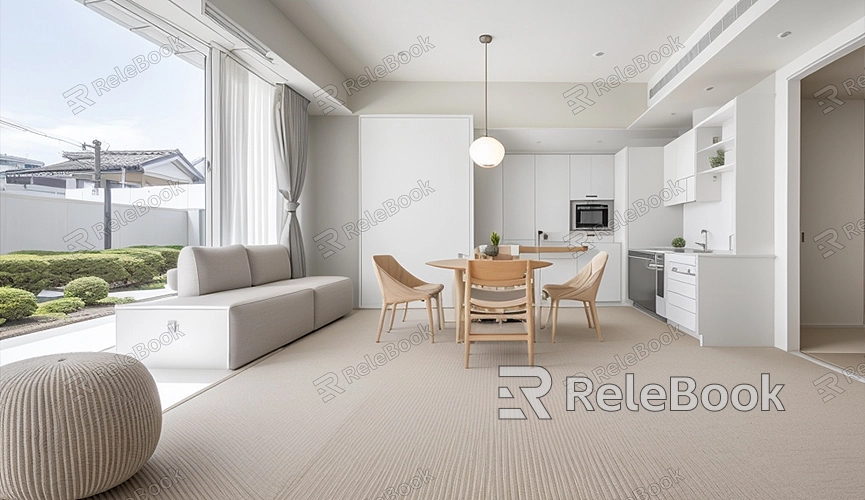Do I Need Two GPUs to Render in Blender?
In modern 3D modeling and rendering work, hardware configuration plays a crucial role in work efficiency and rendering quality. Especially when using Blender for rendering, many people wonder, "Do I need two GPUs to render in Blender?" This article will explore this question, analyzing the advantages and disadvantages of using two GPUs and their practical effects in Blender rendering.
I. What is GPU Rendering?
GPU rendering refers to using a graphics processing unit (GPU) to accelerate the rendering process. Compared to traditional CPU rendering, GPU rendering has the advantages of strong parallel processing capabilities and high speed. Therefore, many 3D artists and animators prefer to use GPU rendering.

II. Pros and Cons of Using a Single GPU
Pros
1. Lower Cost: The cost of purchasing and maintaining a single GPU is relatively low, suitable for individuals and small teams with limited budgets.
2. Easy Installation: Installing only one GPU simplifies the hardware installation and configuration process.
3. Good Compatibility: A single GPU has high compatibility with most software and drivers, reducing potential technical issues.
Cons
1. Performance Limitations: A single GPU has limited processing power, and when faced with complex scenes and high-resolution rendering, rendering speed may be slow.
2. Heating Issues: During prolonged high-load operation, a single GPU may face heating issues, affecting stability.
III. Pros and Cons of Using Two GPUs
Pros
1. Performance Improvement: Two GPUs can parallel process rendering tasks, greatly improving rendering speed, especially noticeable when handling complex scenes.
2. Load Balancing: Two GPUs can share the rendering load, reducing the pressure on a single GPU and extending hardware lifespan.
3. Increased Efficiency: For rendering large projects, a dual GPU system can significantly improve work efficiency and shorten project cycles.
Cons
1. Higher Cost: The cost of purchasing two high-performance GPUs is higher, suitable for professional teams and studios with sufficient budgets.
2. Complex Installation: More hardware installation and configuration work is required, including power supply and cooling issues.
3. Compatibility Issues: Some software and drivers may have compatibility issues, requiring additional technical support.
IV. Blender's Support for Multiple GPUs
Blender is a powerful open-source 3D creation tool that supports rendering with multiple GPUs. Specifically, Blender's Cycles rendering engine can utilize multiple GPUs simultaneously to accelerate the rendering process.
Setting Method
1. Choose Rendering Engine: In the top menu bar of Blender, select the "Render Properties" panel, then choose "Cycles" as the rendering engine.
2. Enable GPU Rendering: In the "Device" options, choose "CUDA" or "OptiX" (for NVIDIA GPUs) or "OpenCL" (for AMD GPUs).
3. Select Multiple GPUs: In the "User Preferences," find the "System" tab, then check all the GPUs you wish to use under the "CUDA" or "OpenCL" options.
V. Recommendations for Practical Application
1. Limited Budget
If your budget is limited, you can start with a high-performance GPU and consider adding a second GPU later as needed. A single high-performance GPU is sufficient for most small to medium-sized projects.
2. Pursuing Efficiency
For professional teams and studios that need to handle complex scenes and high-resolution rendering, investing in two high-performance GPUs is worthwhile. Although the initial cost is higher, the efficiency improvement and time savings it brings are significant.
3. Pay Attention to Cooling and Power Supply
Whether using a single or multiple GPUs, pay attention to cooling and power supply configuration. Ensure that your case has sufficient ventilation and cooling capacity, and the power supply can provide stable current.
VI. Conclusion
Whether you need two GPUs to render in Blender depends on your specific needs and budget. A single GPU is suitable for most individuals and small teams, while two GPUs are suitable for professional teams pursuing efficiency and handling complex projects. By properly configuring and optimizing hardware, you can maximize rendering efficiency and create more outstanding 3D works. If you need high-quality 3D textures, HDRI, or 3D model downloads for creating models and virtual scenes, you can find them on Relebook. After downloading, simply import the textures and 3D models into your project for use.

